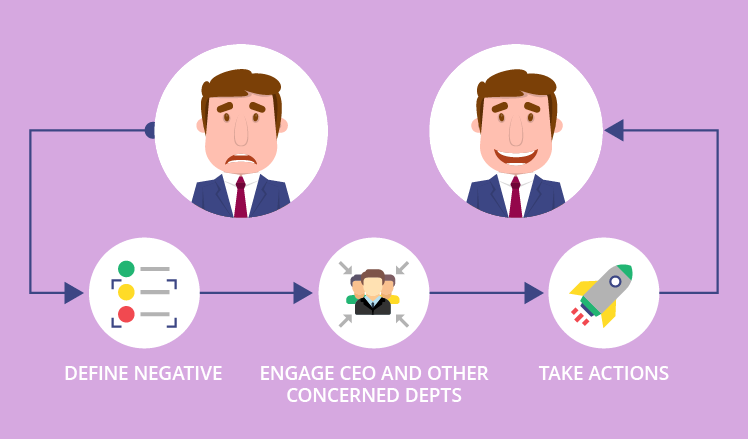When Your Customer Is Upset: How to Deal with Negative Feedback
So you've got the results of your customer satisfaction survey, and some of them are just disastrous. Now what? Will you (a) give up after endless disputes on whom to blame, (b) merely apologize for the customer's poor experience or (c) take actions to improve the situation?
'Too many customer satisfaction studies gather dust because there is no mechanism for turning the market research findings into tangible improvements,' says Paul Hague of B2B International.
Tangible improvements! How many go to such great lengths? Dealing with confidential surveys in the comfort of your office, you are safe from the public shaming of review websites anyway, so no one apart from your dissatisfied customers will notice your reluctance to stand up and act. However, by hushing up problems you will be surely missing a golden chance to become better for the sake of your current and prospective customers.
How to deal with negative feedback' well, systematically?
To help you look into the root of your clients' poor experience and improve it both short- and long-term, we come up with the following workflow that can become part of your customer experience management.

Define negative
Benchmark the definitions of low, average and high customer satisfaction for your business (watch out for satisfaction and referral likelihood scores), adding the scope of alarming issues to be addressed (or ignored because they are not plausible enough).
Make CEO your ally and enroll other depts
Your customer experience strategy should be top-down to win more advocates across the company. With your CEO's support, engage other concerned departments as well they should be ready to supply information on customer interactions and jump in to solve related issues and make a positive change.
Take actions
Approach individual cases immediately plus work out long-term actions for systematic improvements.
Immediate actions may concern only one customer in particular (the one who wasn't happy in the first place) a letter of apology, a next-purchase discount, etc., but long-term ones have to do with strategic, in-depth changes in the way your business operates adopting a different communication policy, opening new locations, abandoning certain business directions, introducing different quality management workflows, firing or hiring, etc.
Reiterate and reward
After you take all the steps for winning your clients' predisposition back, reviving their loyalty and tweaking your company's attitude on a larger scale, go through another round of customer satisfaction survey and compare the results against your expectations to adjust your strategy.
Join the discussion?
We'd be happy to hear your thoughts on the topic. Follow us on LinkedIn and Facebook where we regularly post on CXM and more.

